Abstract
Volume (Jv) and solute (Js) fluxes through Phaseolus root systems were observed over a 24-hour period. The volume flux was varied in a pressure chamber by altering the hydrostatic pressure in 10 steps, from 0 to 0.41 megapascals. All root systems showed strong diurnal peaks in volume flux. The five transport coefficients (σ, ω, Js*, Lp, and π*) were estimated from a nonlinear least squares algorithm. Analysis of the data revealed that all the coefficients exhibited a diurnal rhythm. When the total differential of the volume flux was considered it was possible to show that the diurnal changes in volume flux were due to a complex interaction between the diurnally shifting coefficients with the role of each highly dependent on the level of volume flux. At low volume fluxes, ω, Js*, and π* accounted for nearly all the diurnal change in volume flux. At high volume fluxes, however, the major influence shifted to Lp and π*, while ω and Js* became relatively unimportant. Thus, π* was the only coefficient of interest across the entire range of Jv and appeared to be the single most important one in determining the diurnal rhythm of Jv under conditions of a constant applied pressure.
Full text
PDF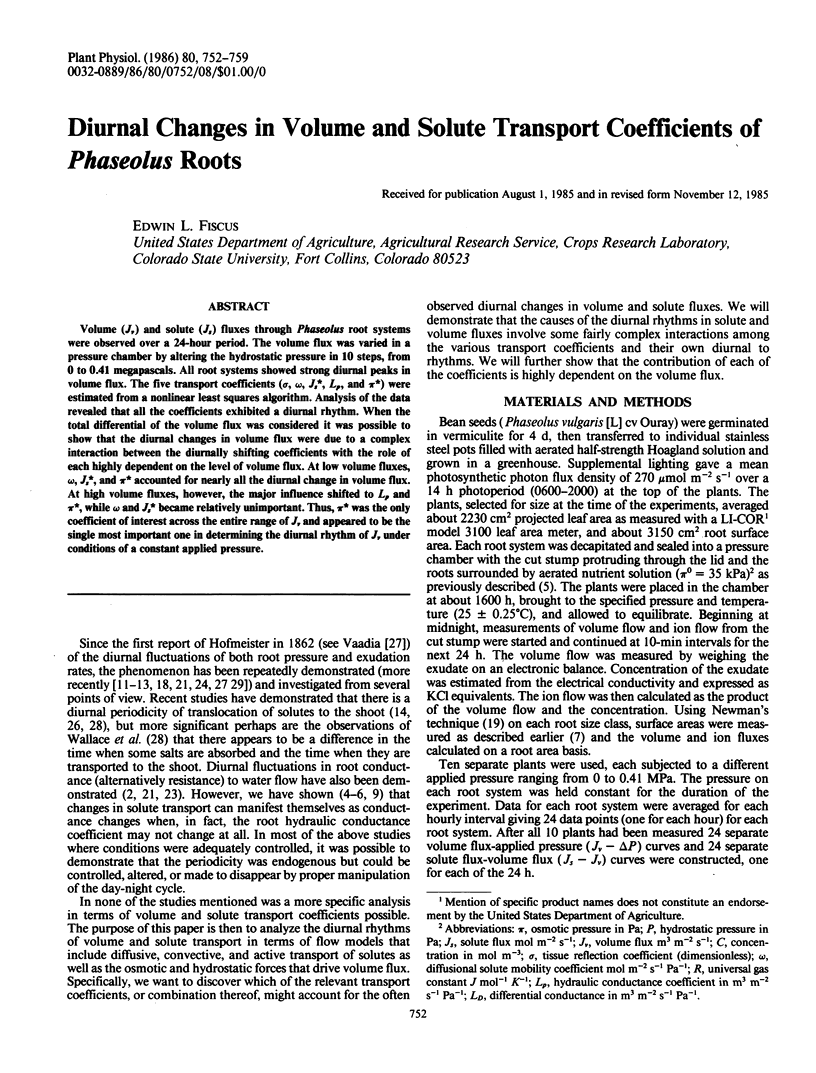
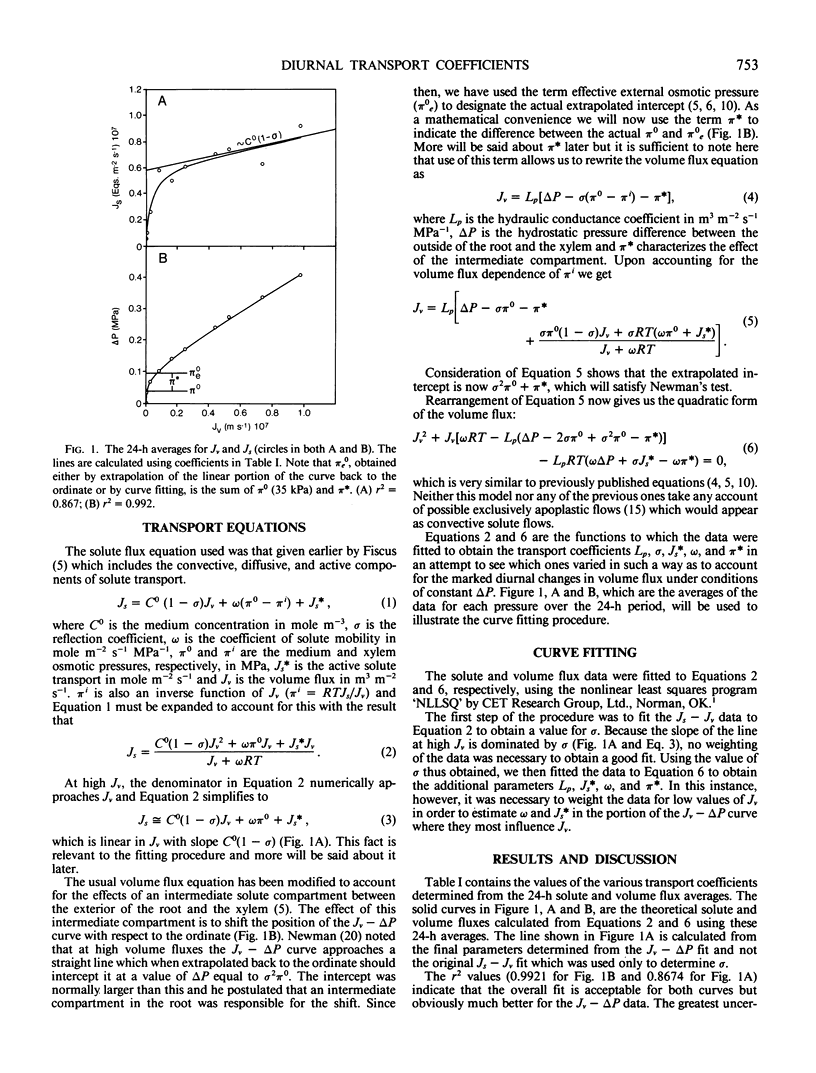
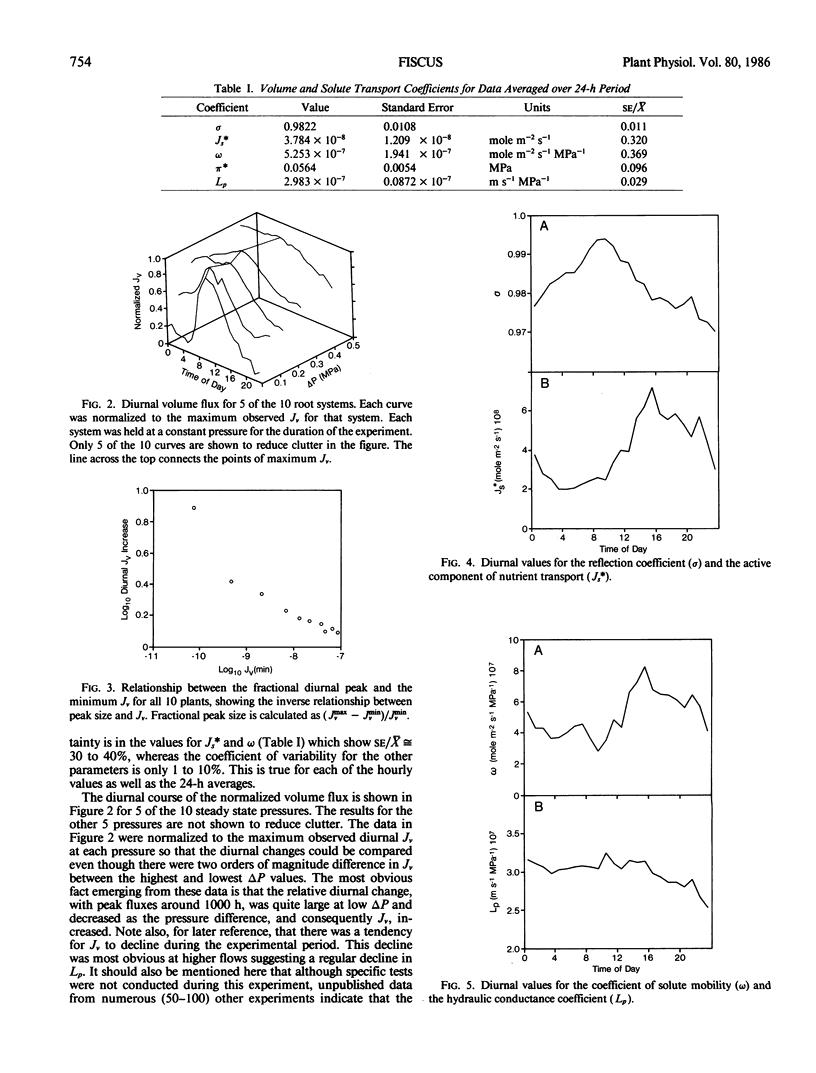
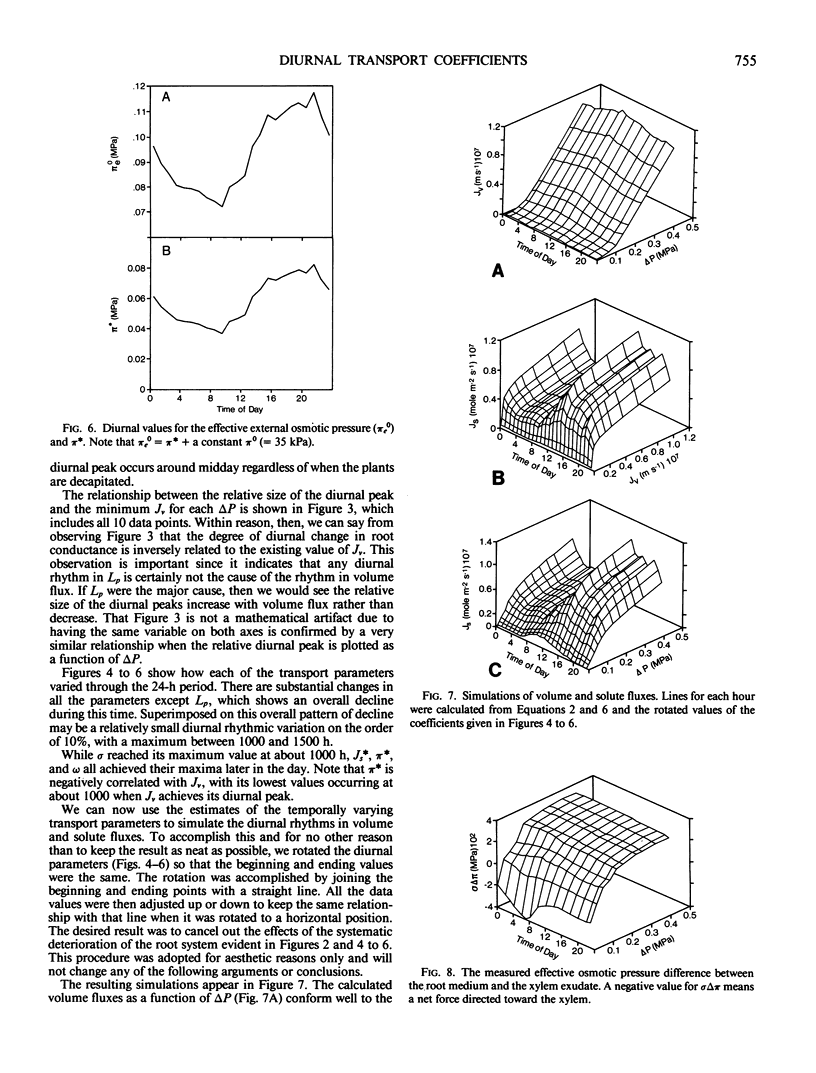
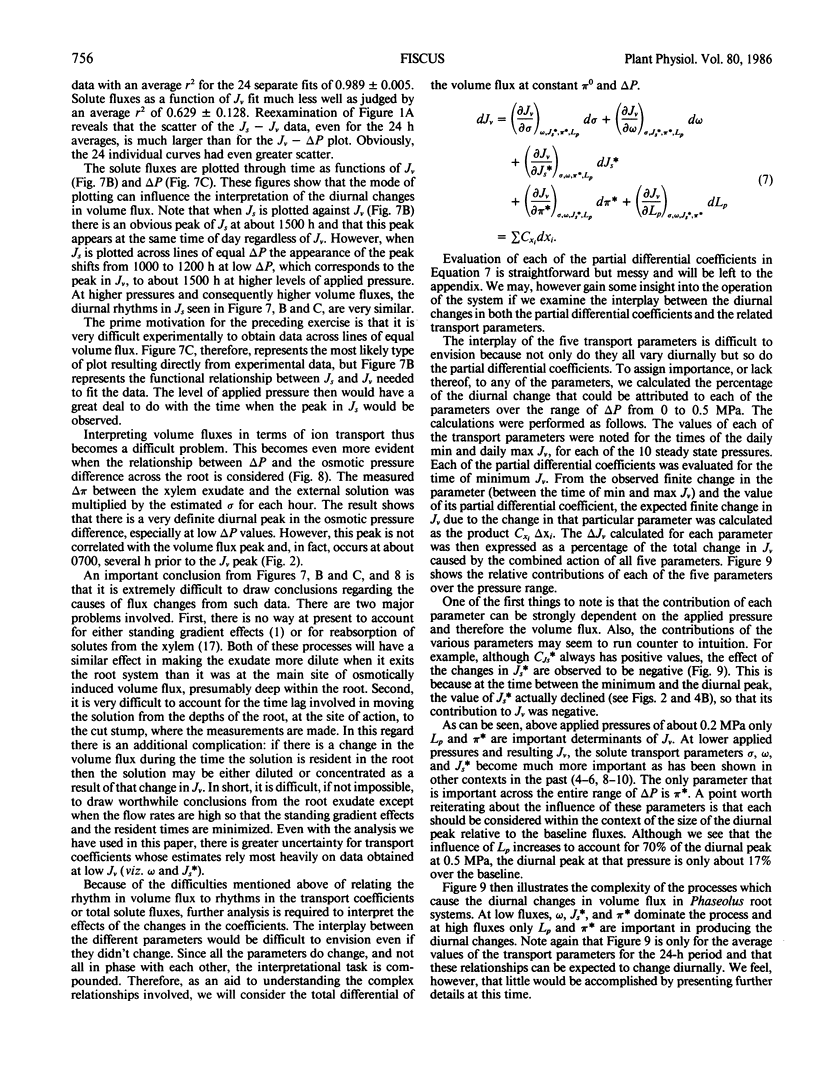
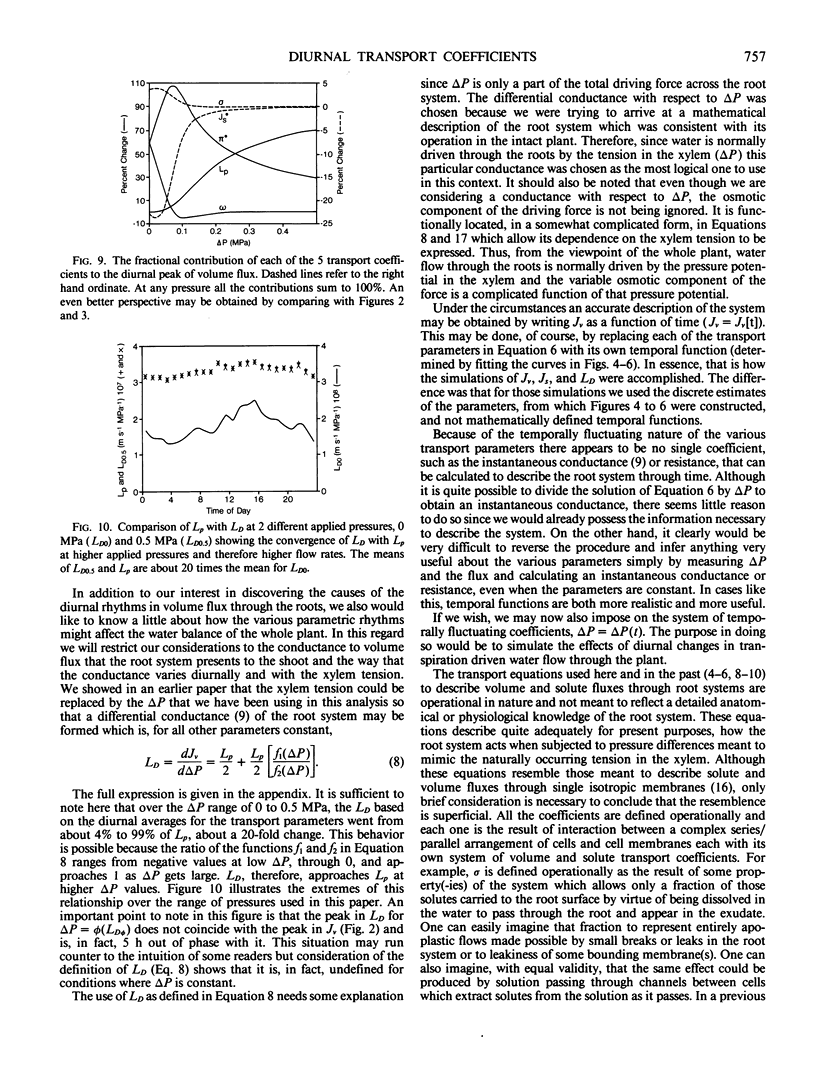
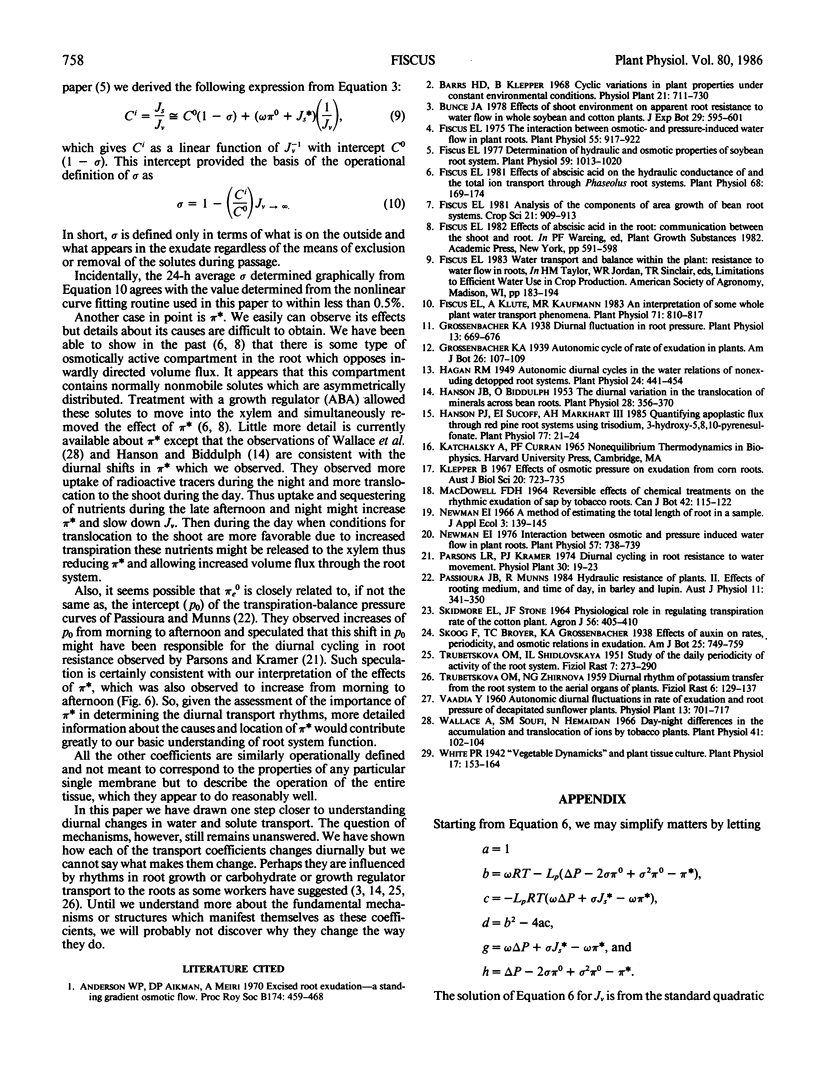
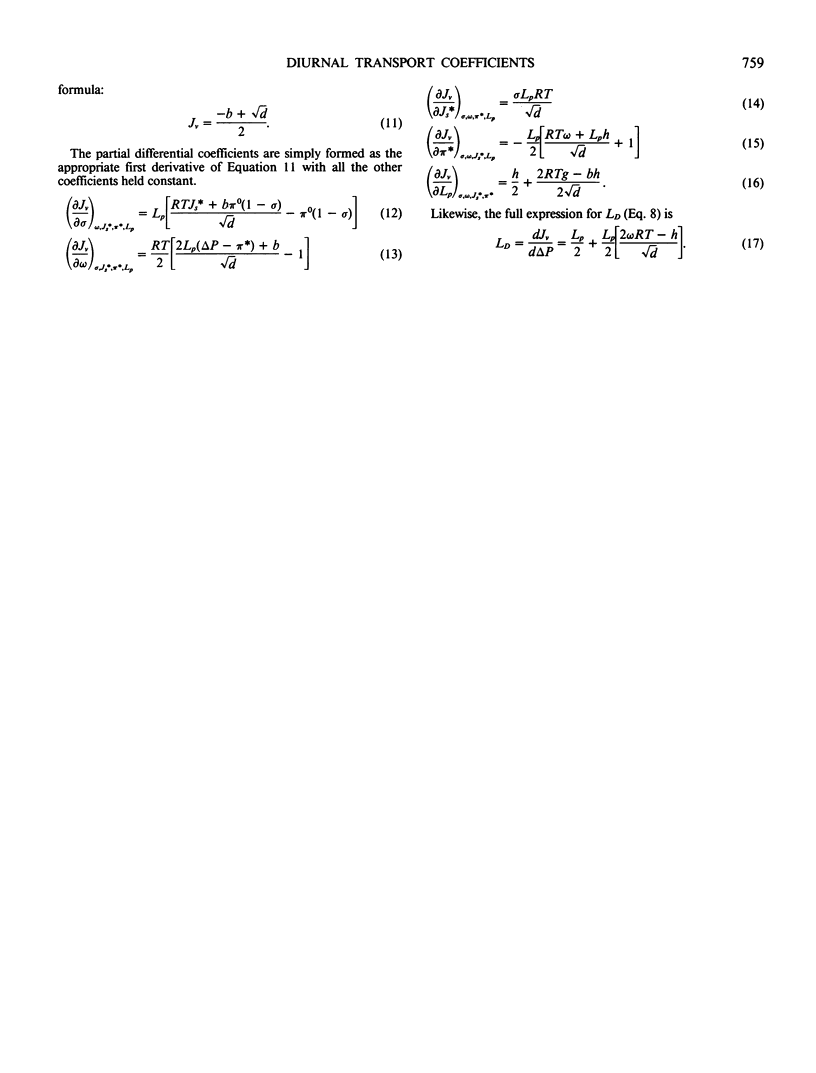
Selected References
These references are in PubMed. This may not be the complete list of references from this article.
- Fiscus E. L. Determination of hydraulic and osmotic properties of soybean root systems. Plant Physiol. 1977 Jun;59(6):1013–1020. doi: 10.1104/pp.59.6.1013. [DOI] [PMC free article] [PubMed] [Google Scholar]
- Fiscus E. L. Effects of Abscisic Acid on the Hydraulic Conductance of and the Total Ion Transport through Phaseolus Root Systems. Plant Physiol. 1981 Jul;68(1):169–174. doi: 10.1104/pp.68.1.169. [DOI] [PMC free article] [PubMed] [Google Scholar]
- Fiscus E. L., Klute A., Kaufmann M. R. An interpretation of some whole plant water transport phenomena. Plant Physiol. 1983 Apr;71(4):810–817. doi: 10.1104/pp.71.4.810. [DOI] [PMC free article] [PubMed] [Google Scholar]
- Fiscus E. L. The Interaction between Osmotic- and Pressure-induced Water Flow in Plant Roots. Plant Physiol. 1975 May;55(5):917–922. doi: 10.1104/pp.55.5.917. [DOI] [PMC free article] [PubMed] [Google Scholar]
- Grossenbacher K. A. DIURNAL FLUCTUATION IN ROOT PRESSURE. Plant Physiol. 1938 Oct;13(4):669–676. doi: 10.1104/pp.13.4.669. [DOI] [PMC free article] [PubMed] [Google Scholar]
- Hagan R. M. AUTONOMIC DIURNAL CYCLES IN THE WATER RELATIONS OF NONEXUDING DETOPPED ROOT SYSTEMS. Plant Physiol. 1949 Jul;24(3):441–454. doi: 10.1104/pp.24.3.441. [DOI] [PMC free article] [PubMed] [Google Scholar]
- Hanson J. B., Biddulph O. The Diurnal Variation in the Translocation of Minerals across Bean Roots. Plant Physiol. 1953 Jul;28(3):356–370. doi: 10.1104/pp.28.3.356. [DOI] [PMC free article] [PubMed] [Google Scholar]
- Hanson P. J., Sucoff E. I., Markhart A. H. Quantifying Apoplastic Flux through Red Pine Root Systems Using Trisodium, 3-hydroxy-5,8,10-pyrenetrisulfonate. Plant Physiol. 1985 Jan;77(1):21–24. doi: 10.1104/pp.77.1.21. [DOI] [PMC free article] [PubMed] [Google Scholar]
- Newman E. I. Interaction between Osmotic- and Pressure-induced Water Flow in Plant Roots. Plant Physiol. 1976 May;57(5):738–739. doi: 10.1104/pp.57.5.738. [DOI] [PMC free article] [PubMed] [Google Scholar]
- Wallace A., Soufi S. M., Hemaidan N. Day-night Differences in the Accumulation and Translocation of Ions by Tobacco Plants. Plant Physiol. 1966 Jan;41(1):102–104. doi: 10.1104/pp.41.1.102. [DOI] [PMC free article] [PubMed] [Google Scholar]
- White P. R. "VEGETABLE DYNAMICKS" AND PLANT TISSUE CULTURES. Plant Physiol. 1942 Apr;17(2):153–164. doi: 10.1104/pp.17.2.153. [DOI] [PMC free article] [PubMed] [Google Scholar]


